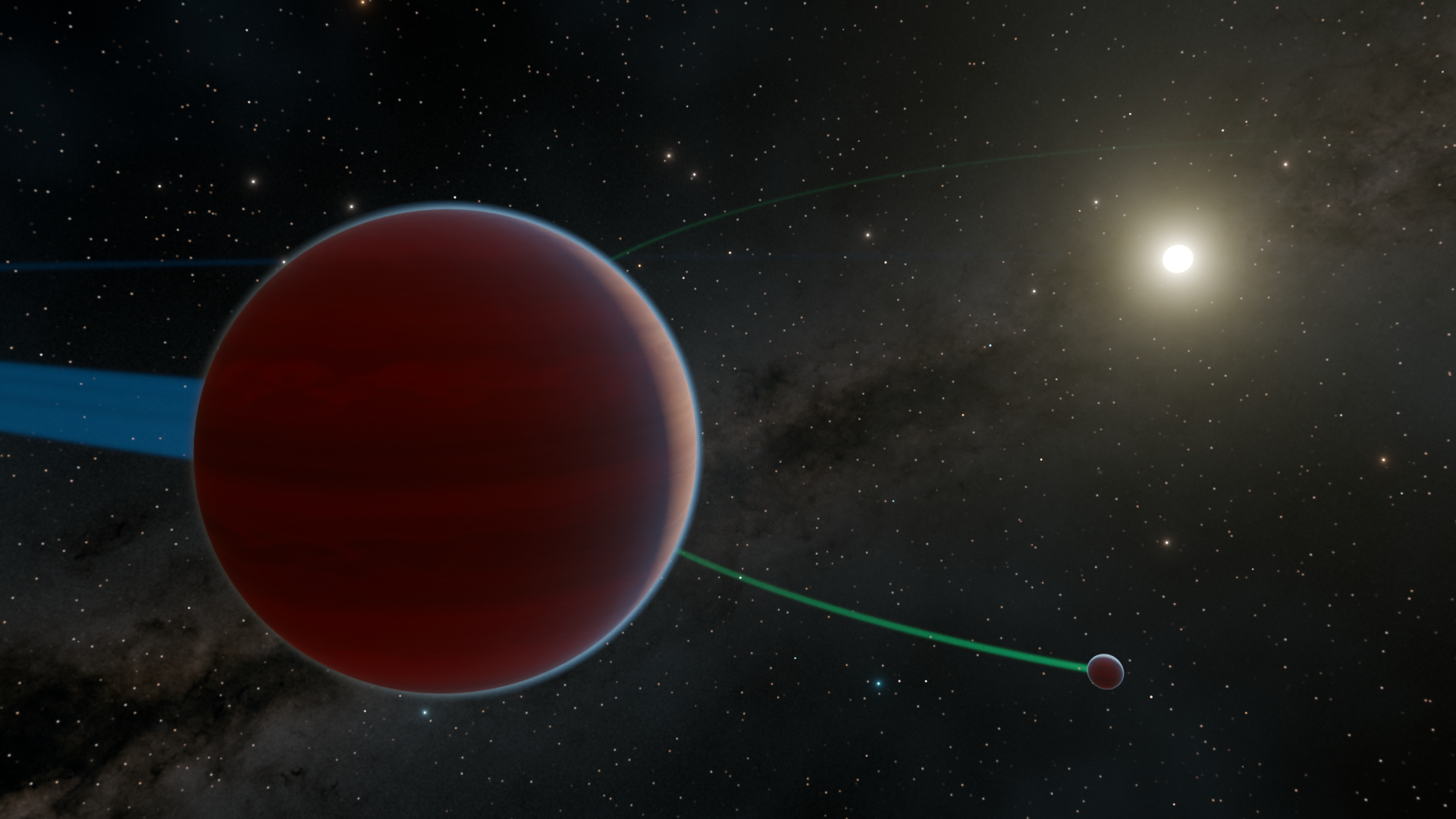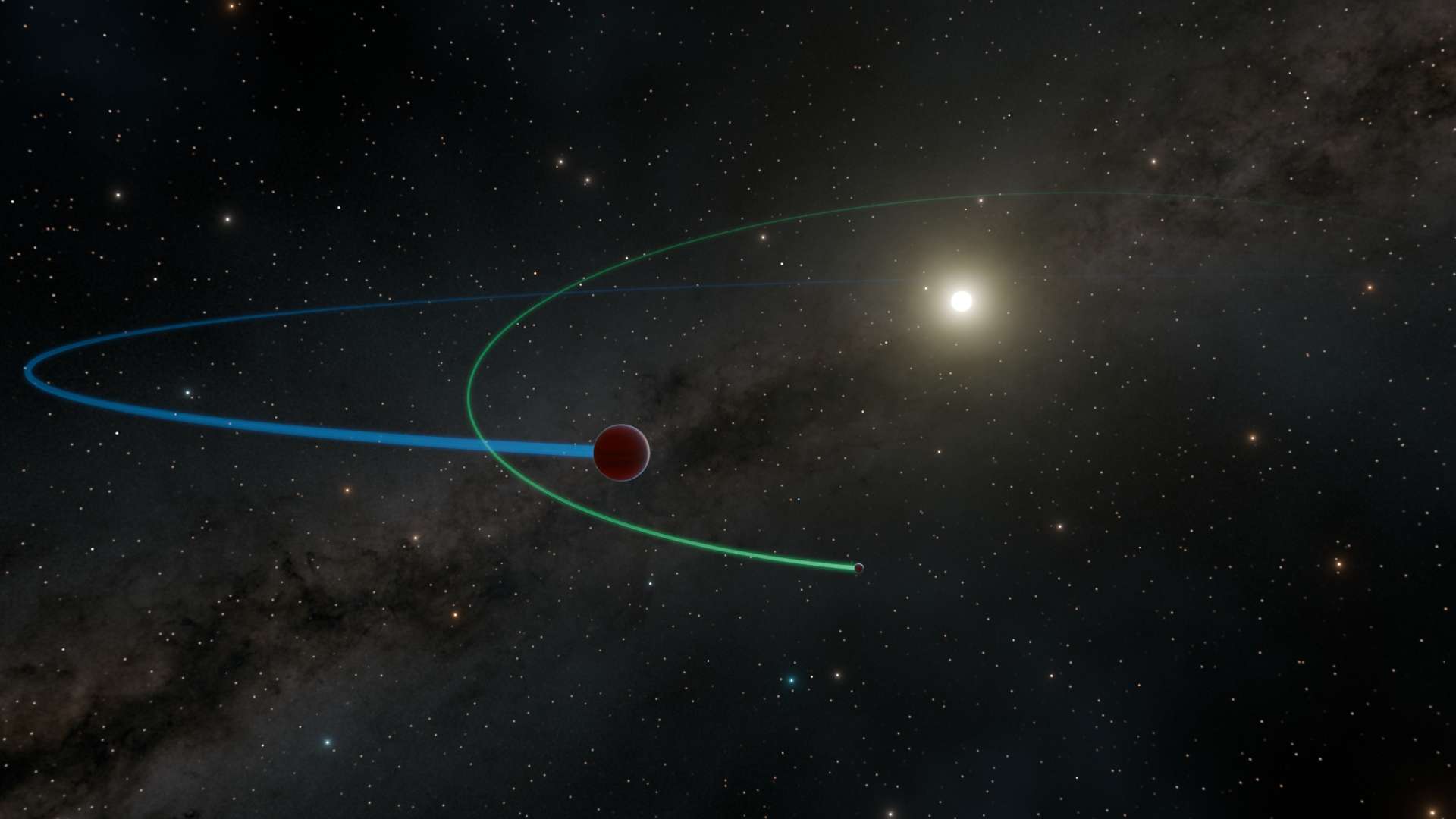The Planets
KOI-134 b and KOI-134 c

The Discovery
A new investigation into old Kepler data has revealed that a planetary system once thought to house zero planets actually has two planets which orbit their star in a unique style, like an old-fashioned merry-go-round.
Key Facts
The KOI-134 system contains two planets which orbit their star in a peculiar fashion on two different orbital planes, with one planet exhibiting significant variation in transit times. This is the first-discovered system of its kind.
Details
Over a decade ago, scientists used NASA's Kepler Space Telescope to observe the KOI-134 system and thought that it might have a planet orbiting, but they deemed this planet candidate to be a false positive, because its transits (or passes in front of its star) were not lining up as expected. These transits were so abnormal that the planet was actually weeded out through an automated system as a false positive before it could be analyzed further.
However, NASA's commitment to openly sharing scientific data means that researchers can constantly revisit old observations to make new discoveries. In this new study, researchers re-analyzed this Kepler data on KOI-134 and confirmed that not only is the "false positive" actually a real planet, but the system has two planets and some really interesting orbital dynamics!
First, the "false positive" planet, named KOI-134 b, was confirmed to be a warm Jupiter (or a warm planet of a similar size to Jupiter). Through this analysis, researchers uncovered that the reason this planet eluded confirmation previously is because it experiences what are called transit timing variations (TTVs), or small differences in a planet's transit across its star that can make its transit "early" or "late" because the planet is being pushed or pulled by the gravity from another planet which was also revealed in this study. Researchers estimate that KOI-134 b transits across its star as much as 20 hours "late" or "early," which is a significant variation. In fact, it was so significant that it's the reason why the planet wasn't confirmed in initial observations.
As these TTVs are caused by the gravitational interaction with another planet, this discovery also revealed a planetary sibling: KOI-134 c. Through studying this system in simulations that include these TTVs, the team found that KOI-134 c is a planet slightly smaller than Saturn and closer to its star than KOI-134 b.

KOI-134 c previously eluded observation because it orbits on a tilted orbital plane, a different plane from KOI-134 b, and this tilted orbit prevents the planet from transiting its star. The two orbital planes of these planets are about 15 degrees different from one another, also known as a mutual inclination of 15 degrees, which is significant. Due to the gravitational push and pull between these two planets, their orbital planes also tilt back and forth.
Another interesting feature of this planetary system is something called resonance. These two planets have a 2 to 1 resonance, meaning within the same time that one planet completes one orbit, the other completes two orbits. In this case, KOI-134 b has an orbital period (the time it takes a planet to complete one orbit) of about 67 days, which is twice the orbital period of KOI-134 c, which orbits every 33-34 days.
Between the separate orbital planes tilting back and forth, the TTVs, and the resonance, the two planets orbit their star in a pattern that resembles two wooden ponies bobbing up and down as they circle around on an old-fashioned merry go round.
Fun Facts
While this system started as a false positive with Kepler, this re-analysis of the data reveals a vibrant system with two planets. In fact, this is the first-ever discovered compact, multiplanetary system that isn't flat, has such a significant TTV, and experiences orbital planes tilting back and forth.
Also, most planetary systems do not have high mutual inclinations between close planet pairs. In addition to being a rarity, mutual inclinations like this are also not often measured because of challenges within the observation process. So, having measurements like this of a significant mutual inclination in a system, as well as measurements of resonance and TTVs, provides a clear picture of dynamics within a planetary system which we are not always able to see.
The Discoverers
A team of scientists led by Emma Nabbie of the University of Southern Queensland published a paper on June 27 on their discovery, "A high mutual inclination system around KOI-134 revealed by transit timing variations," in the journal "Nature Astronomy." The observations described in this paper and used in simulations in this paper were made by NASA's Kepler Space Telescope and the paper included collaboration and contributions from institutions including the University of Geneva, University of La Laguna, Purple Mountain Observatory, the Harvard-Smithsonian Center for Astrophysics, the Georgia Institute of Technology, the University of Southern Queensland, and NASA's retired Kepler Space Telescope.






